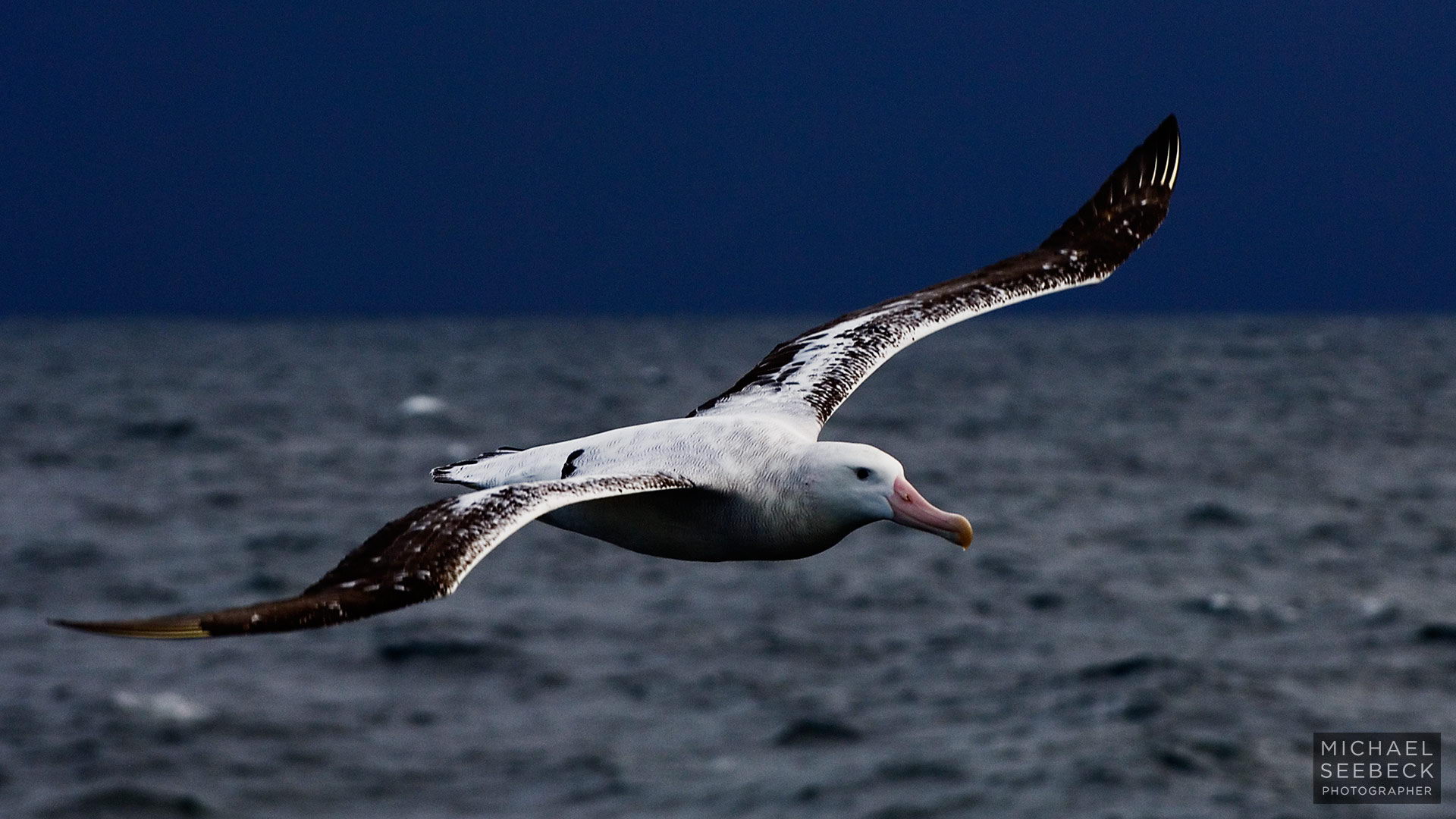The wandering albatross (Diomedea exulans) is a large seabird and is primarily known for its large wingspans. It is arguably one of the largest birds in the world. The wandering albatross is clearly recognizable by its chocolate brown wings and snowy white plumage. We have gathered informative wandering albatross facts to let you know all about the bird with the largest wingspan. The ‘snowy albatross’ and the ‘white-winged albatross’ are some other names given to this seabird.
Wandering Albatross Facts
Anatomy of Wandering Albatross
- The wandering albatross has long been respected for its large wingspans which typically range from 2.51 to 3.5 m (8 ft 3 in to 11 ft 6 in) but the average span measures 3.1 m (10 ft 2 in). The longest wingspan ever recorded of this bird was 3.7 m (12 ft 2 in).
- The wings are of chocolate brown color while the belly and back are absolutely snowy white. The more it grows the more white it goes. So if you happen to see one that is pure white then the bird would be of age.
- The bird is 107 to 135 cm (3 ft 6 in to 4 ft 5 in) long with males are slightly greater than females.
- It weighs up to 5.9 to 12.7 kg (13 to 28 lb). The wandering albatrosses of the Crozet Islands and Macquarie Islands are relatively heavier.
Wandering Albatross Distribution
- The snowy albatross is known to breed all along the Crozet Islands, Prince Edward Islands, South Georgia Island, Heard and Macquarie Island, and Kerguelen Islands.
- It is found in the southern island of New Zealand and also breeds in high latitudes in the southern oceans.
- The snowy albatross spends almost all his life in flying except when it has to feed its chicks or breed.

Wandering Albatross Habitat
The wandering albatross makes home over deep waters far away from continental shelves. It is found in marine and highly pelagic habitats.
Behavior of Wandering Albatross
- The wandering albatross is well adapted to cover great distances. It is hard to measure how much distance does each bird covers but the maximum distance ever recorded of wandering albatross was 6,000 kilometers in just 12 days.
- It has a range of different grunts, moans, screams and whistles but the bill clappering is fairly common in albatrosses.
- The expected lifespan of the wandering albatross is 50 years.
The large wingspan of the wandering albatross helps it to fly for several hours without flapping its wings.
Feeding Ecology and Wandering Albatross Diet
- The wandering albatross rarely makes shallow plunge dives in fact it often seizes its prey from the surface.
- It feeds on cephalopods, but at night the bird eats deepwater and bioluminescent squid, and finally the snowy albatross supplements its diet with crustaceans and fish.
- Of all the albatross species, the wandering albatross is the only species that feeds on carrion. It is also observed following the ships in order to get something to eat.
- According to one survey the snowy albatross flies over deep oceans in search of food for as long as 25 days to cover around 20,800 km.

Wandering Albatross Reproductive Biology
- The female wandering albatross lays only one egg mostly in between 10 December and 5 January.
- The nest is lined with grassy vegetation and soil peat. It builds nest every time the breeding occurs.
- The incubation (development) period lasts 79 days on average.
- The chicks fledge (developing wing feathers) out in about 271 days.
- It is monogamous and breeds biennially.
- The wandering albatross attains maturity at 11 years of age.
- About 5–7% of young albatrosses reach adulthood.
Wandering Albatross Conservation Status
The long-line fisheries in the southern oceans have reduced the total population of wandering albatrosses. It is classified as Vulnerable to extinction by the International Union for the Conservation of Nature (IUCN). The population in each of the islands is:
- South Georgia (2,100)
- Marion and Prince Edward Island (3,000)
- Crozet Island (1,700)
- Kerguelen Island (1,400)






Leave a Reply